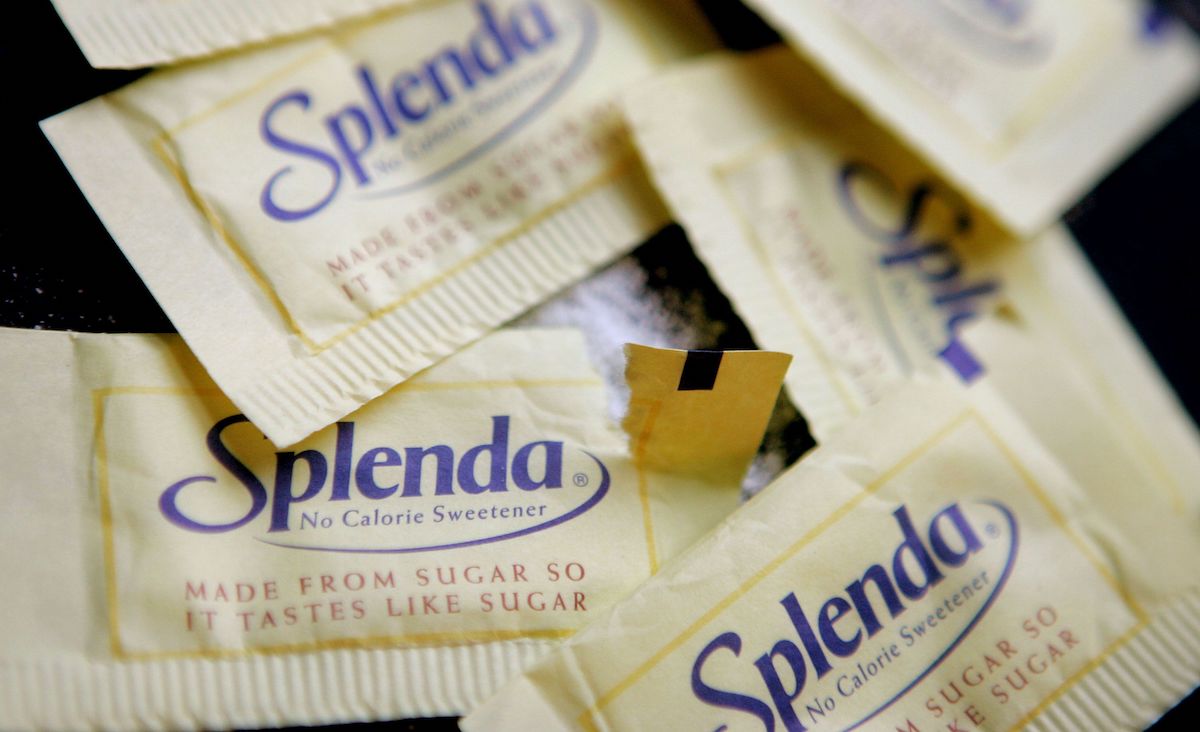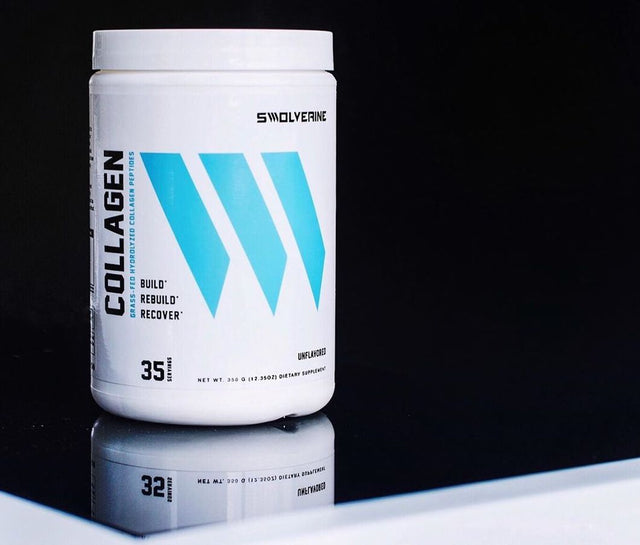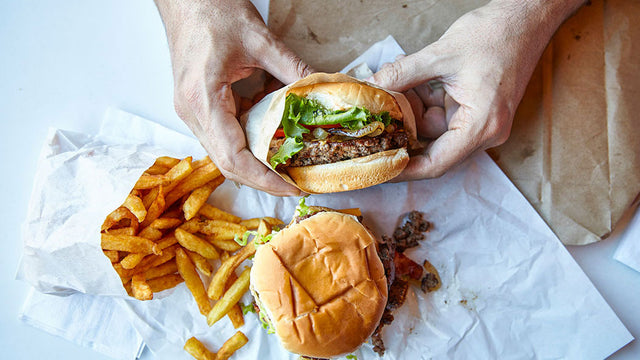Stevia and sucralose (Splenda) are two of the most popular zero-calorie sweeteners found in everything from diet sodas to protein powders. While stevia is often praised for being "natural," sucralose is commonly criticized for being artificial. But is that reputation justified? And is one truly safer—or better—than the other?
Let’s take a closer look at the science, the differences, and the facts behind the labels so you can make an informed decision.
What Is Stevia?
Stevia is a natural, plant-based sweetener extracted from the leaves of Stevia rebaudiana, a shrub native to South America. For centuries, stevia has been used in Paraguay and Brazil as a sweetener known locally as yerba dulce (sweet herb).
The compounds responsible for stevia’s sweetness are called steviol glycosides, particularly rebaudioside A (Reb A)—the most abundant and best-tasting of these compounds. Reb A is estimated to be 200–300 times sweeter than sugar with zero calories.
“Steviol glycosides have been used in South American herbal medicine and are now widely available in purified forms as sugar substitutes.” — Magnuson et al., Food and Chemical Toxicology
Is Stevia Safe?
Though stevia has been used for centuries, not all forms are approved. The U.S. FDA granted GRAS status only to purified steviol glycosides like Reb A in 2008. Crude stevia extracts and whole-leaf stevia are not approved as food additives.
“Only high-purity steviol glycosides such as rebaudioside A are approved for use in food in the U.S.” — FDA
Stevia has not shown adverse effects in human trials at approved intake levels, but long-term studies remain limited, and some people report bloating or an unpleasant aftertaste.
What Is Sucralose (Splenda)?
Sucralose, known commercially as Splenda, is a synthetic zero-calorie sweetener made from real sugar (sucrose) in a multi-step chemical process. In this process, three hydroxyl groups are replaced with chlorine atoms, resulting in a compound 600 times sweeter than sugar, with no calories and no impact on blood sugar.
“Sucralose is chemically modified sugar that is not recognized by the body as a carbohydrate, therefore it has no caloric or glycemic effect.” — Roberts et al., Critical Reviews in Toxicology
Sucralose is not metabolized by the body and is excreted unchanged in urine.
Is Sucralose Safe?
Yes. Sucralose has undergone extensive testing and is approved for use in over 100 countries. Regulatory agencies including the FDA, European Food Safety Authority (EFSA), Health Canada, and the World Health Organization (WHO) have all reviewed it and declared it safe.
“Sucralose has been thoroughly evaluated and is not associated with any adverse effects in human trials.” — Magnuson et al., Regulatory Toxicology and Pharmacology
Unlike earlier concerns about artificial sweeteners, sucralose has not been shown to cause cancer, reproductive harm, or digestive issues in human clinical trials. However, ongoing research continues to investigate potential gut microbiota effects.
Where Are Stevia and Sucralose Commonly Used?
| Product Category | Stevia | Sucralose (Splenda) |
|---|---|---|
| Protein powders | Natural or plant-based blends | Most mainstream whey or isolate products |
| Pre-workouts | Organic or stimulant-free mixes | Common in flavored formulas and RTDs |
| Energy drinks | Keto or clean-label brands | Found in popular commercial drinks |
| Sweeteners | Stevia blends with erythritol or monk fruit | Splenda packets and sugar-free baking blends |
| Snacks/desserts | Low-carb and plant-based snacks | Sugar-free yogurts, protein bars, etc. |
Stevia vs. Sucralose: What's the Difference?
| Attribute | Stevia | Sucralose (Splenda) |
|---|---|---|
| Source | Plant-derived from Stevia rebaudiana | Synthesized from sugar (sucrose) |
| Sweetness | 200–300x sweeter than sugar | 600x sweeter than sugar |
| Calories | 0 | 0 |
| Aftertaste | Slight bitter or licorice taste for some | Nearly identical to sugar |
| Stability | Less heat-stable, may degrade in baking | Highly heat-stable and shelf-stable |
| Approval | GRAS for purified forms (e.g., Reb A) | Approved by all major food safety agencies |
| Metabolism | Minimal; some glycosides absorbed | Not metabolized; excreted unchanged |
Acceptable Daily Intake (ADI)
| Sweetener | ADI (mg/kg body weight/day) | Equivalent for 150 lb person |
|---|---|---|
| Stevia (Reb A) | 4 mg/kg | ~272 mg/day |
| Sucralose | 5 mg/kg | ~340 mg/day |
“ADI levels are set far below doses shown to cause harm, with large safety margins.” — FDA
Environmental Considerations
-
Stevia requires agricultural land, but the extraction process is relatively sustainable and requires fewer chemical agents.
-
Sucralose is produced in labs and is not biodegradable. Trace levels are sometimes found in water systems, but current data shows minimal environmental risk at existing exposure levels.
“Sucralose resists wastewater treatment and may persist in aquatic environments, but levels are not currently deemed hazardous.” — Buerge et al., Environmental Science & Technology
Frequently Asked Questions
Q: Is stevia better for people with diabetes?
Both stevia and sucralose are safe for individuals with diabetes and do not raise blood glucose or insulin levels.
Q: Can either sweetener cause digestive issues?
Some people report mild bloating from stevia blends (especially those with erythritol). Sucralose is generally well tolerated but under investigation for long-term microbiome effects.
Q: Will stevia or sucralose break a fast?
No. Both are non-caloric and do not break intermittent fasting when consumed alone.
Q: Which one tastes better?
Taste is subjective. Stevia can have a bitter aftertaste, while sucralose tastes more like sugar.
Q: Are these sweeteners found in clean-label or organic products?
Stevia is more common in natural or organic products. Sucralose is more common in mainstream or flavored performance supplements.
Final Takeaway: Which Is Better—Stevia or Sucralose?
Despite the natural vs. artificial debate, both stevia and sucralose are safe, zero-calorie options when used as approved. The differences are less about health impact and more about taste, texture, and marketing.
-
Stevia may appeal to those wanting a more natural, plant-based sweetener—despite its slight aftertaste and refining process.
-
Sucralose is chemically derived but extensively studied, widely used, and often preferred for its clean, sugar-like taste and stability.
There’s no strong evidence suggesting that one is healthier than the other. Instead, choose the sweetener that aligns with your preferences, dietary goals, and product formulations.
“At approved levels, both sucralose and stevia are safe, effective sugar substitutes that support calorie reduction and blood sugar control.” — Lohner et al., PLOS One





